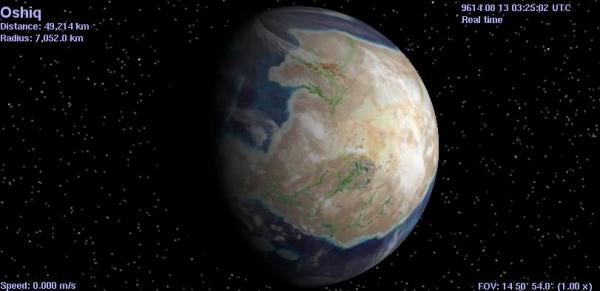BY LETTER
PostGaian Subtype
Old Gaian Worlds that are losing their biosphere and hydrosphere | |
 Image from Steve Bowers | |
| Oshiq, a dying world with seas that are slowly evaporating | |
As a sun ages and evolves, so do its planets. Gaian worlds perhaps evolve more than most, simply because their delicate biospheres transform and fade, an effect which influences the entire world. As the sun brightens, the oceans begin to evaporate, plunging the world into a Pelagic type world, where the atmosphere has thickened greatly and merges almost imperceptibly with the 200 degree oceans. But a critical point is eventually reached where there is catastrophic atmospheric and surface water loss.
The sheer heat of the sun drives away the protective atmosphere, the oceans dry, and what is left is a desert world with only deep basins of highly saline seas, seas that have lifetimes measured in the thousands of years. A highly evolved PostGaian world will be completely waterless, its atmosphere a relic of its habitable past. The geologic cycle of these worlds has largely ceased, although some remaining volcanism and minor tectonic activity might linger, slowly turning the atmosphere unbreathable as carbon dioxide begins to build. Life remains on the planet, reduced to extremophiles, huddled beneath the surface, away from the deadly heat, perhaps sequestered in underground oases where large amount of liquid water are preserved. Example Oshiq
Related Articles
Appears in Topics
Development Notes
Text by John M. Dollan
Initially published on 20 November 2008.
Initially published on 20 November 2008.






